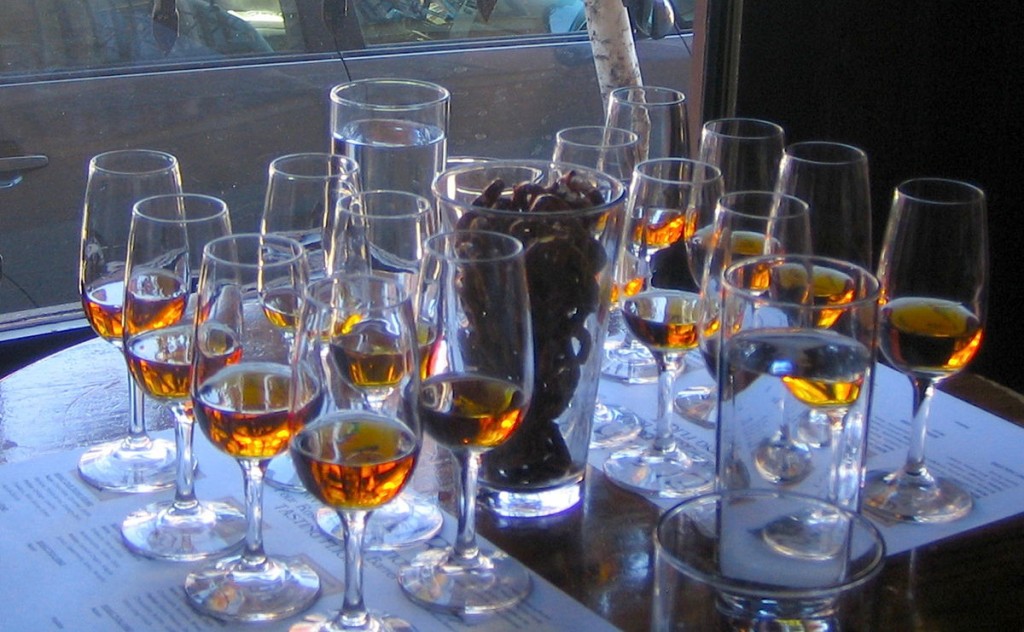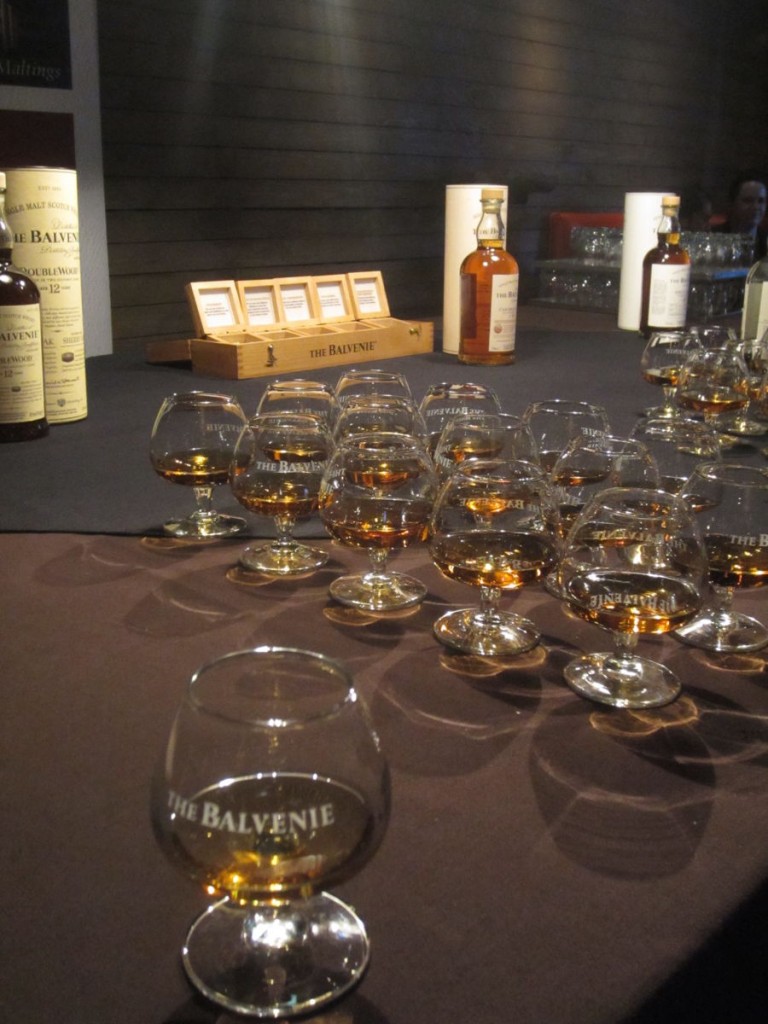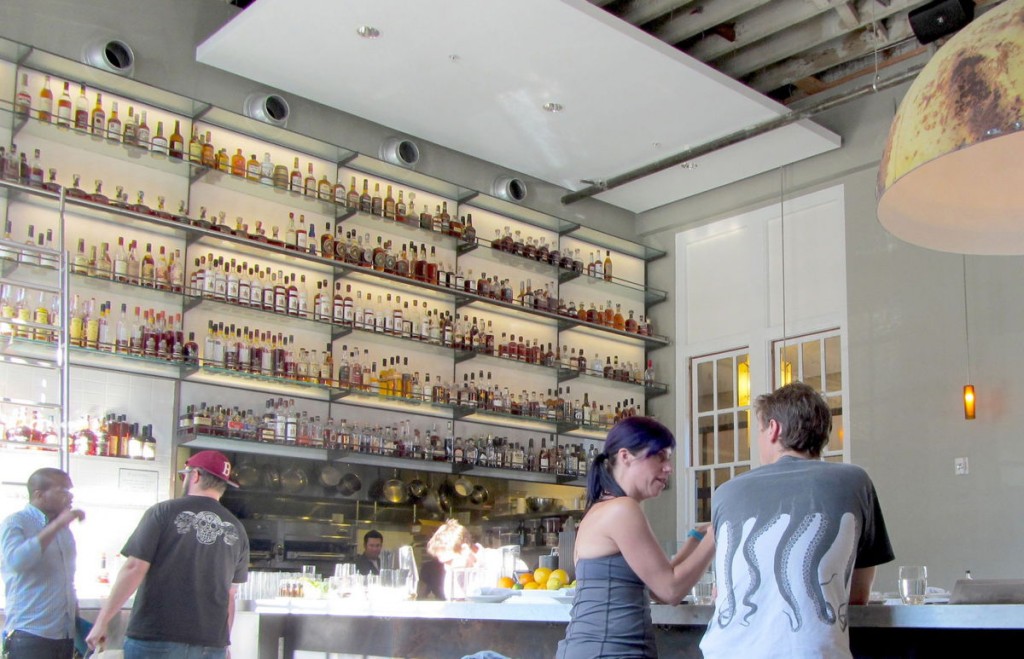We’ve all heard of people who, while clearing out the houses of departed loved ones, discover secret caches that startle everyone: Coffee cans jam-packed with hundred-dollar bills, say. Or steam trunks stuffed with 1940’s porn.
After my mother died three years ago, I found a few mild sad surprises. Boxes and boxes of tiny toy plastic umbrellas. Closets full of purple and yellow denim vests. And dozens of card decks for the countless games of solitaire she played since Dad died twenty years before. Bearing the insignia of defunct airlines, they were scuffed souvenirs of her long-vanished flying days.
And, in a dining-room cupboard, a liquor collection.
I had always known it was there, but had never much cared. My parents seldom drank, save the occasional sip of liquid-candy chocolate liqueur. Now legions of dust-furred bottles glinted softly through the cobwebs. How did they all find their way to this house where not a single cocktail party was ever held?
Some of the bottles were minis, which used to be given away free on airplanes. Others I suspect were gifts, bestowed by acquaintances who had no idea that Mom and Dad would no more mix Martinis than build hydroplanes. A few bottles of rum, vodka and Cherry Heering were in the cupboard, but for some reason whiskeys were dominant, as if they had mated and given birth in there.
I brought the liquor home alongside Mom’s washing machine and other items from the house. Never a big drinker myself, I realized that cocktail culture had recently become a thing. Bourbon was booming. Rye was on the fly. Mad Men, amen. Opening my inherited bottles, pouring a few drops from each into shot glasses, I thought: Oh yeah!
And then: Oh yuck. These brews, despite their lambent amber hue, were harsh. Mixed into cocktaily experiments with syrup, ice and Meyer lemon juice, they positively seared.
Baffled, I made the rounds of the best local bars to ask mixologists what I was doing wrong. And this was how I learned that not all whiskeys are alike. That although my “new” whiskey was old, it was cheap from the start and that was its problem — and mine. Horrible whiskey does not improve with age.
But although the main takeaway of these dialogues was that I now owned some new old bad stuff, I had also at last sipped some good stuff and wanted to sip more. I wanted to learn more, wanted to talk like all those hipsters I overheard about malt, mash, casks, proofs and tuns. So it began. San Francisco became my whiskiversity.
After attending a tasting of The Balvenie handcrafted single-malt Scotch at the Blackbird Bar one night, I thought I could levitate and soar across the dark sparkling city like Peter Pan. After a lesson involving the pairing of 25-year-old single-malt Bowmore Scotch with oysters at SF Chefs last summer, I wanted to hug everyone in the room, and I never hug anyone.
Sampling a flight at Elixir Bar with the folks from Four Roses, I learned about Kentucky’s popular bourbon tours.
At Charles Phan’s Hard Water, I couldn’t decide whether to gaze out the window at sailboats or at the restaurant’s floor-to-ceiling whiskey selection: Stocked with hundreds of bottles, it’s specially outfitted with a necessary ladder.
While tasting Tullamore D.E.W. blended Irish whiskey at the Matrix, I could have sworn I felt my cells transforming into something gossamer and luminous. At Southside Spirit House, my whiskey was paired with a truffled-mushroom pizza; at Bergerac, with a blood-pudding Scotch egg; at brand-new Third Rail, with house-made espresso-infused jerky. Grown-up stuff. At Eureka!
Burger, where like everything else on the menu all the whiskeys are American-made, a glorious and golden flight — served with lollipop-shaped corn dogs — sang of salty summer dreams and swirling smoke.
By then, however, I knew that I would never speak of casks and tuns. I might never actually know, in technical terms, the basic differences between bourbon and the other stuff. I just like the smell and taste of much of it. And as seen in nineteen years of real school, my mind resists data and translates experiences into paeans with the garbled ardor of a child who has discovered frosting-in-a-can. The more I sipped, the more I heard myself saying:
“Whiskey is good! It’s warm! It tingles! It makes you feel better even when you didn’t realized you felt bad! It smells like caramel, char, seashells and rain-soaked stones! It soothes you even as it burns!”
Pennsylvania distiller Eric Meyer, who named his Wigle Whiskey (along with his Wigle gins, rums and rhapsodic organic bitters) after a brave fighter in America’s 18th-century Whiskey Rebellion, offered me exactly the tasting tips any whiskiversity freshman would need:
“Smell the whiskey first,” Meyer advised. “The nose is a much more sensitive instrument than the tongue, as the nose contains thousands more nerves than the tongue. When you smell, keep your mouth open. Because whiskey has such a high alcohol percentage, if you just inhale through your nose, the alcohol will likely dull the nerves in your nose and you will not get the full range of smells you should be able to.”
The next technique? “Add water. A lot of people, especially in America, look down on adding water to whiskey — but from a flavor standpoint, water is actually a serious whiskey drinker’s best friend. Water contains oxygen, and the oxygen opens up the whiskey, giving a richer spectrum of flavors.” To maximize the flavors of strong whiskeys, Meyer suggests half-water, half-whiskey.
He added a sip-tip: “If you want to be really fancy, you can put a little whiskey on your tongue and swirl the alcohol around, trying to hit all four taste buds on the tongue. A simpler version of this is to chew the whiskey, again with the goal of having as many different parts of the tongue touch the whiskey.
Either way, different parts of the tongue are going to get different flavors out of the whiskey, so the more of these parts you hit, the richer your tasting experience.”
I tried these techniques last night at a private party featuring my old first favorite, The Balvenie. Gaping-mouthed like a thirsty manatee, I sampled Caribbean Cask fourteen-year-old rum-finish single malt. Daintily, I added water from a dropper to seventeen-year-old DoubleWood.
After swirling sophisticated 21-year-old Portwood around on my tongue to give its many regions their own chance to taste its toffee-allspice-suede notes, I chewed it. Ng ng ng. And OMG. The Balvenie brand manager Lorne Cousin avowed that its flavor would linger in my mouth for ten minutes more. He was correct.
One great thing about such an ancient, now-trendy beverage as whiskey is that so much of it still awaits. Whole amber-colored, smoky seas of it.
All photo credits taken by Kristan Lawson











